Driving The Volvo Museum Collection Is A Swedish Hot Rod Fantasy

I started out in a safety orange 1975 Volvo 242. This was a first-year, entry level model, with a 1.8-liter B20A engine carried over from the car’s slightly-less rectilinear predecessor, the 140. “It made under 100 hp,” said Hans Hedberg, the company’s heritage manager, and the madman responsible for my upcoming red herring buffet. This is not much to motivate nearly 3000-lbs of Swedish iron, even given its four-speed manual. But on my trip from my hotel in Gothenberg to the company’s test track an hour out of town, the brick pumpkin nonetheless delivered joy.
2024 Chevrolet Colorado ZR2 Bison | First Drive
I Need A Fun And Fuel Efficient Ride | What Car Should You Buy?
Thursday 2:43PM
Photo: Volvo/Brett Berk
Some of this might have been a result of the car’s interior, which was done up in a period-correct riot of electric tangerine overlain by a layer of orange, gold, black, and brown vertical stripes that would not have looked out of place on a collared pullover in Ernie’s boyfriend Bert’s closet. “In 1975, you could buy a tie in that pattern at your Volvo dealer,” Hedberg told me, wistfully, like any good Gen X-er, recalling the permanent autumnal palette of our shared childhoods.

Photo: Volvo/Brett Berk
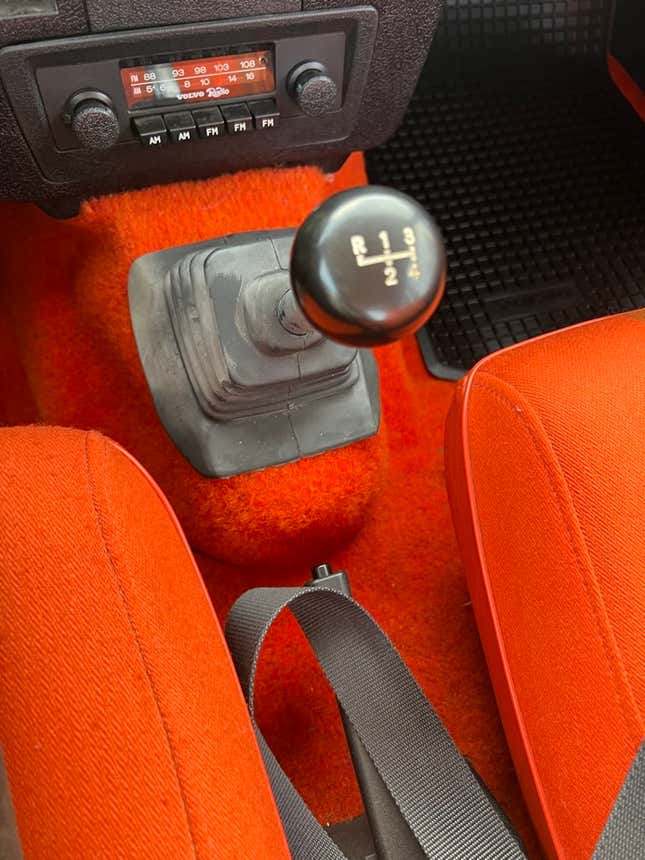
Photo: Volvo/Brett Berk
But most of my giddiness was anticipatory. I was in town, in part, to drive a handful of hot rods from the company’s nearly 100-year history. When I told my boyfriend, with whom I had owned two up-powered six-cylinder 1970s Volvos in our 20s during the ‘90s, he looked suspicious. “Volvo made hot rods?” Indeed they did.
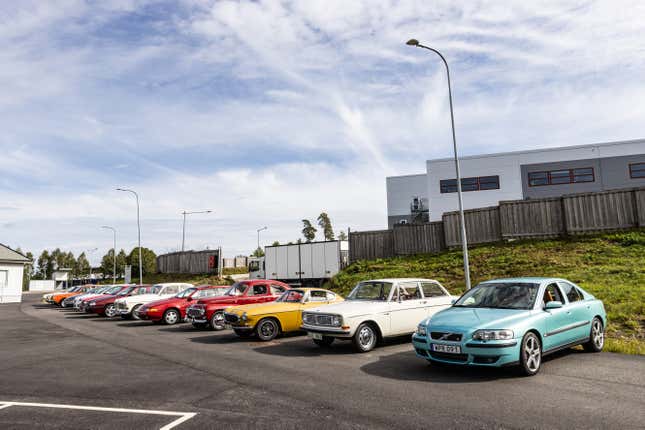
Photo: Volvo/Brett Berk
First up was a trio of mid-90s 850 turbos. I began in a burgundy T-5 sedan, before moving on to a bright red T-5 R sedan. These were both manuals, making the R a personal unicorn, given that that spec was never available in the US. The more potent of this pair made nearly 250 hp, and the lesser model somewhere in the low 200s, a relative feast, and certainly enough to overpower their front wheels, which I did quite often (actually, always) despite the help Porsche had offered in the car’s tuning.
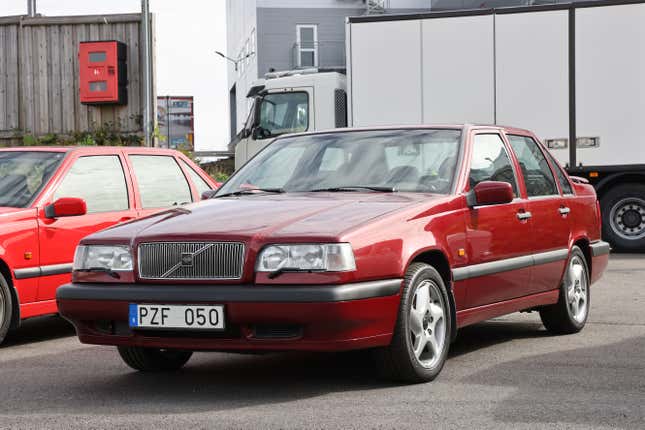
Photo: Volvo/Brett Berk
Surprisingly, or maybe not, the comparatively weaker car delivered more pleasure. It was less peaky, better balanced, and had superior damping, while feeling every bit as quick, if not more usably speedy. This did not surprise Hedberg. “I always advise people against buying the top spec of a vintage car,” he said. “Those cars were always used harder, and have more that can go wrong or wear out.” Instead, he recommended that shoppers, “buy an 850 Turbo you can drive all the time.”
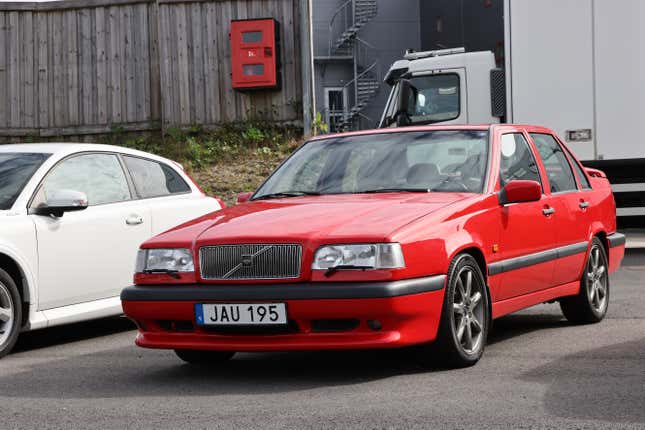
Photo: Volvo/Brett Berk
The third leg of the åttahundrafemtio triangle was an American-spec T-5R station wagon, in a putrid hue that I call Necrotic Liver. Quick for a wagon, it was sadly equipped with an automatic transmission and hobbled alignment that caused it to dress to the right, regardless of how firmly I tried to command it. (The next day, we drove that beast an hour northeast to Trollhättan, to visit the Saab museum, but that’s another story.) Despite my affection for Volvo wagons, I didn’t fall for this veering buff slab.
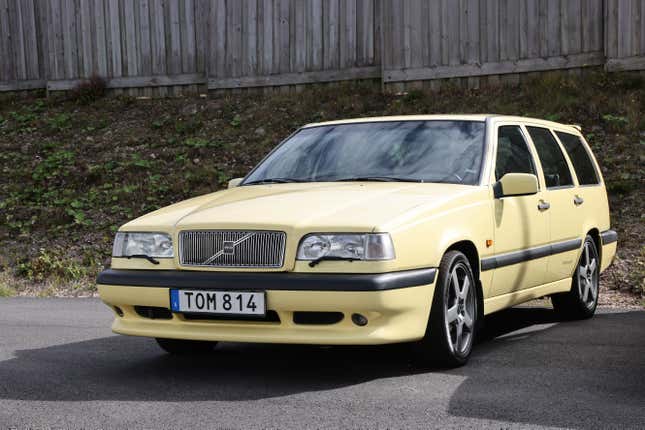
Photo: Volvo/Brett Berk
Up next was a 2004 S60 R AWD in a very period correct teal over orange—Flash Green and Atacama, in Volvo-speak—complete with cobalt-tinted gauges and the marque’s unique 6-speed manual shifter, with the so-called “spaceball” rounded base, the wondrous leather-tipped knob of which looks like it has turgidly broken free of its codpiece, to the delight of size queens and superhero cos-players the world over.
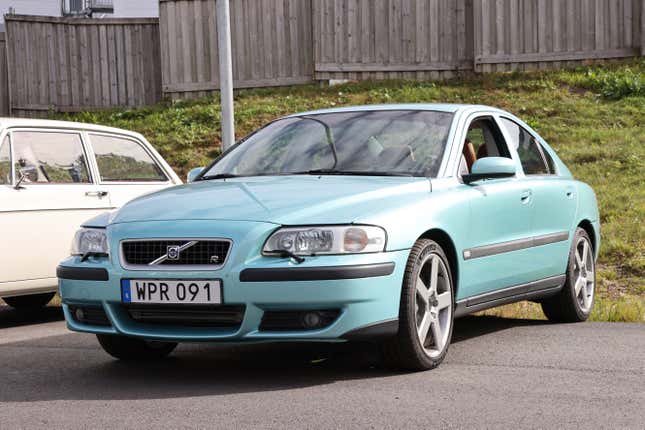
Photo: Volvo/Brett Berk
This thing was a genuine speed demon in its day, capable of a 5.5-second sprint to 60 mph. It still felt plenty fast on the twisty Swedish country roads on which I viciously flogged it, helped along by an all-wheel-drive system which, despite a strong FWD bias, could be goosed into feeling like it had a more even F/R split with clever pedal dancing. Despite its one zillion dashboard buttons, blessed lack of any large distracting LCD screens, and lunatic color scheme, it felt surprisingly modern.
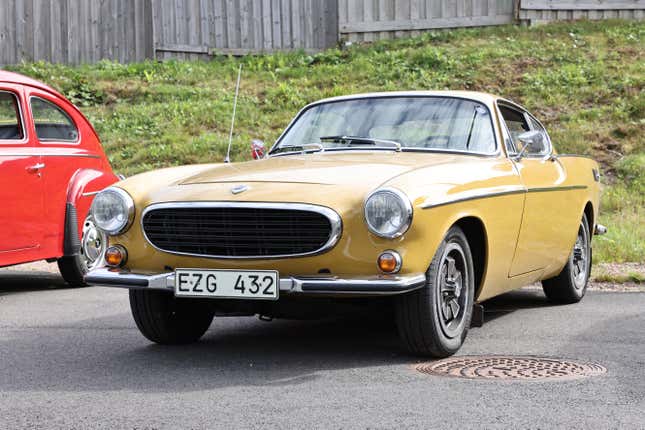
Photo: Volvo/Brett Berk
Extremely not-modern was an auric 1960s P1800 that I got into next, a delicate and razor-finned 2+2 that looked like Italian translated into Swedish, because it was (it was designed by a Swede who’d been indoctrinated by Pietro Frua.) I’ve always had something of an affection for these as a Nordic sports coupe outlier—like the kooky Saab Sonett. And while I was happy to finally get behind the wheel, and revel in its intricate daintiness, it didn’t really do much for me.
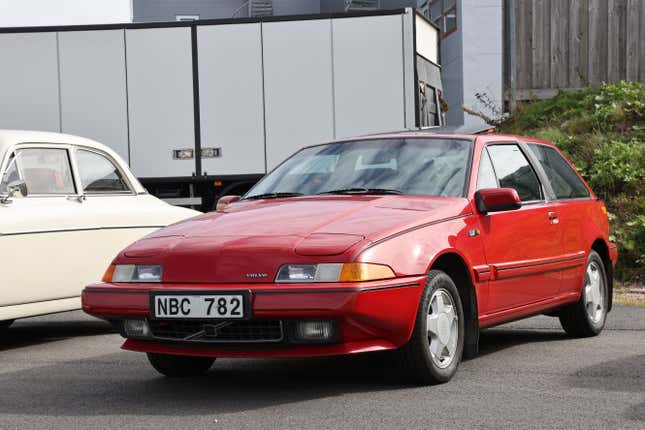
Photo: Volvo/Brett Berk
The P1800 wasn’t a total dead end for the brand. Late in its life, it yielded Volvo’s first shooting brake, the P1800ES, a body style which, after a bar mitzvah-length absence, was resurrected in the next car I drove, the 480ES of the mid-80s. (And, later, in the 2006-13 C30.) I was blessed with a turbo, five-speed model, which gained 20 hp over its naturally-aspirated siblings. This was Volvo’s first model with front-wheel-drive, and only with pop-up headlights. Aimed at an image defrumpification, to compell the young Boomers who were migrating into Bimmers, it did neither for the US market, because it was never available here. It was weird, in all the best ways, and made me miss the similarly door-stoppy mid-80s Civic two-door hatch I drove for a summer in college.
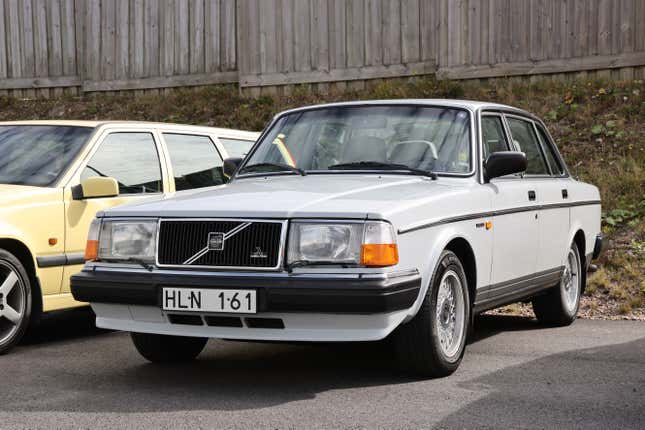
Photo: Volvo/Brett Berk
Yet my absolute favorite car of the day was 1000x more compelling. It brought me full circle, as it was another 240, but it could not have been more different from the tangerine dreampuff from that morning. It was a sedan, it was an ’88, and it had BBS alloys and a five-speed (though the top cog was accessed electronically, via a knob-top switch with a 5 on it.)
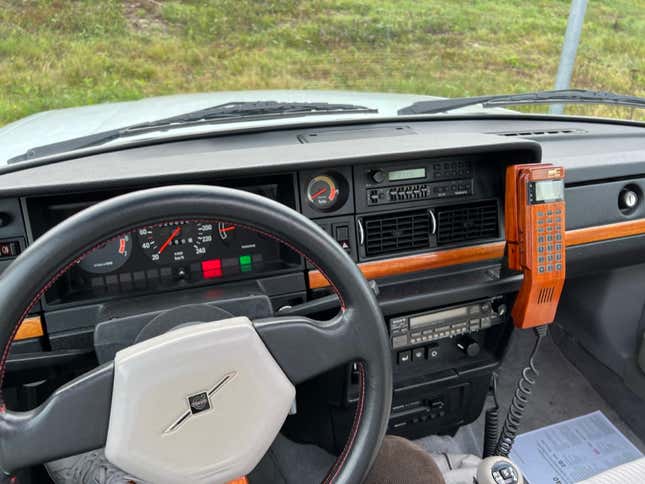
Photo: Volvo/Brett Berk
But, more than this, it had been specially built for the then-CEO of the company, and, as such, had every go-fast bit that could be bolted on. This included a special rally tuned suspension, and, most notably, a stroked, turbocharged, and intercooled version of Volvo’s beefy 2.5-liter marine engine. A naturally aspirated 1988 240 made 115 hp; a stock turbo model made just over 150 hp. This one, according to Heberg, made 265 hp.
It drove like some kind of stonking resto-mod with an LS swap, or like the love child of a 240 and a Mercedes 500E, but was as tight and flat and utterly unflappable as a brand new Volvo. I was smiling so hard while hammering it, I thought I would require a face transplant upon exiting. Instead, I kept that grin plastered on, and simply started prowling eBay for that orange 1975 necktie. (So far, I’ve only found the blue version.)
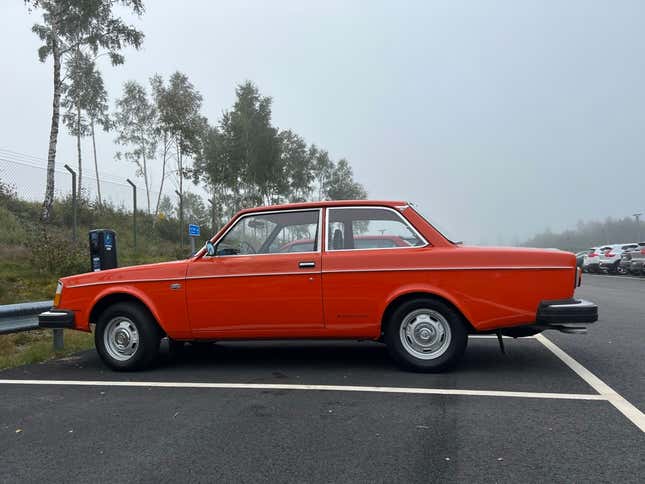
Photo: Volvo/Brett Berk
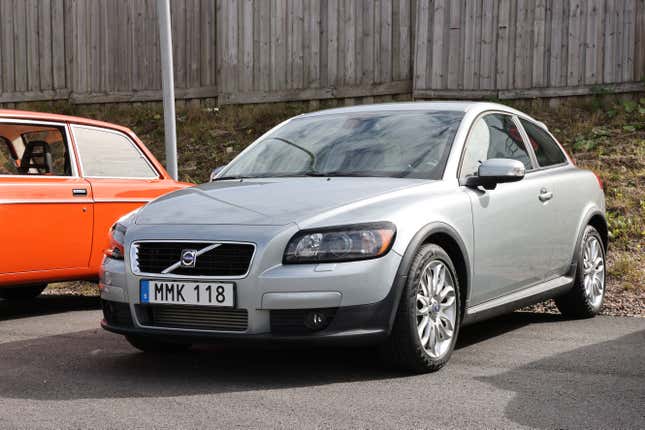
Photo: Volvo/Brett Berk
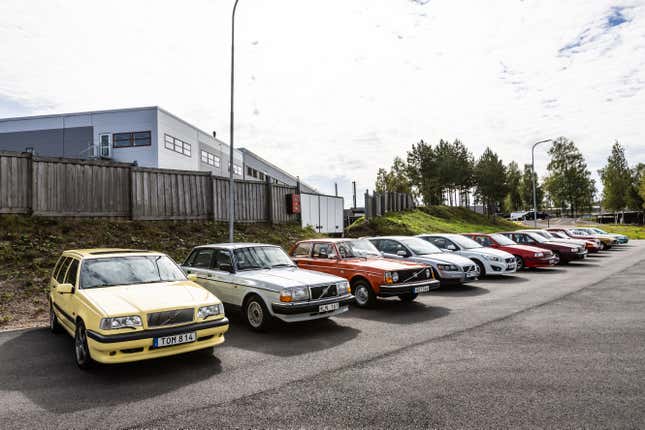
Photo: Volvo/Brett Berk
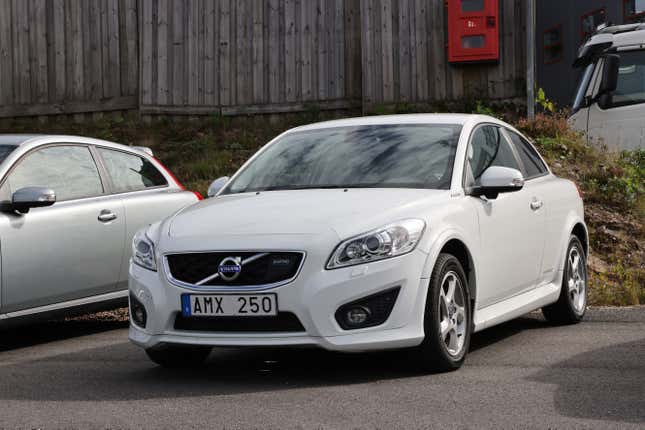
Photo: Volvo/Brett Berk
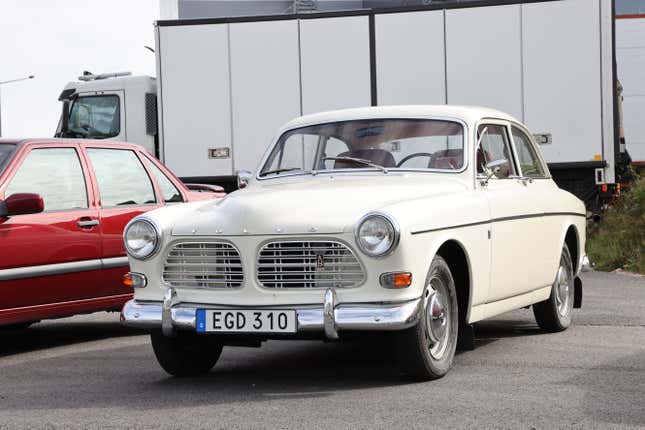
Photo: Volvo/Brett Berk
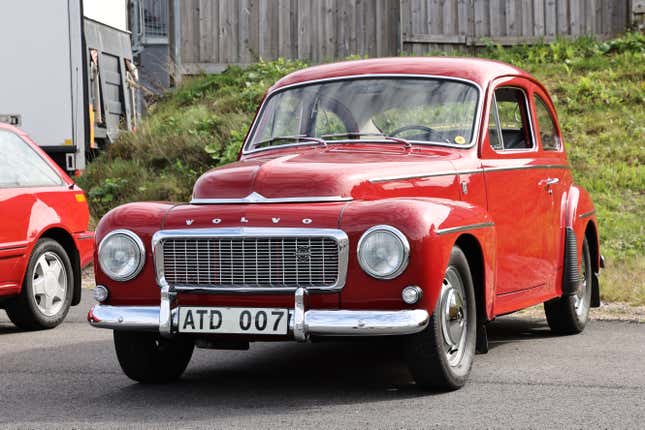
Photo: Volvo/Brett Berk
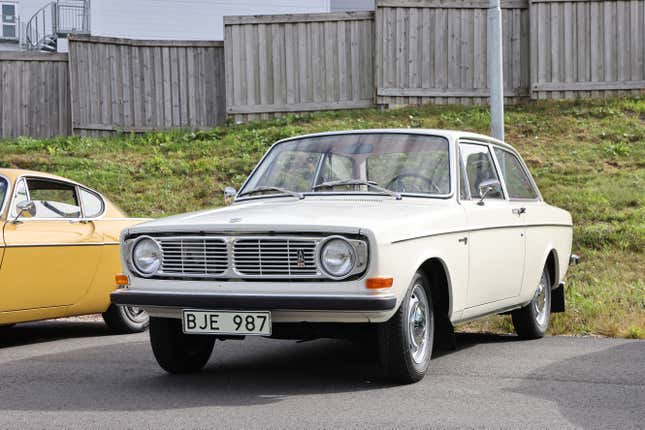
Photo: Volvo/Brett Berk



